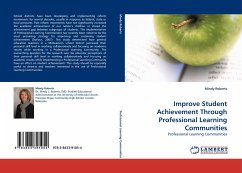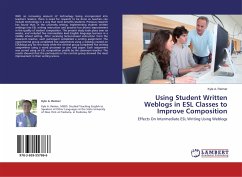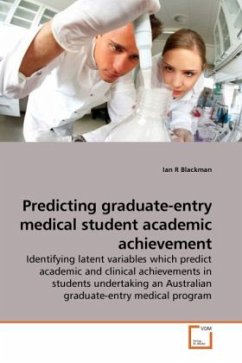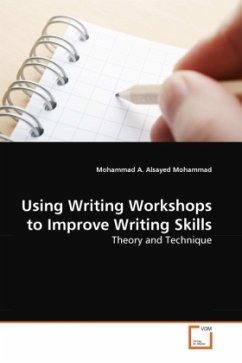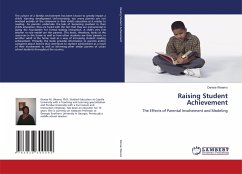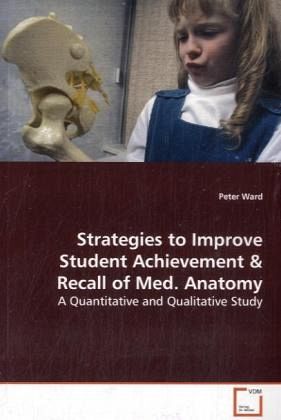
Strategies to Improve Student Achievement
A Quantitative and Qualitative Study
Versandkostenfrei!
Versandfertig in 6-10 Tagen
52,99 €
inkl. MwSt.

PAYBACK Punkte
26 °P sammeln!
Most of us would be happy if our doctors recalled the majority of what they learned in school. However, the workload of professional school often force students to prepare for exams using methods that have very little potential for long-term recall. The purpose of this book is to explore the learning and teaching methods that most effectively to promote long-term recall by medical students. Through a quantitative analysis of student recall over a two-year period, this book gives general guidance to educators to develop their courses in ways that promote long-term recall rather than a binge-and...
Most of us would be happy if our doctors recalled
the majority of what they learned in school.
However, the workload of professional school often
force students to prepare for exams using methods
that have very little potential for long-term
recall. The purpose of this book is to explore the
learning and teaching methods that most effectively
to promote long-term recall by medical students.
Through a quantitative analysis of student recall
over a two-year period, this book gives general
guidance to educators to develop their courses in
ways that promote long-term recall rather than a
binge-and-purge approach to study. In addition,
through intensive case studies of successful and
unsuccessful students, it assists students in
finding a theri own way to master the material in
their courses without sacrificing their
understanding and recall. By using an integrated
analysis this book presents a generalizable
quantitative study of a class of students and how
they studied over a two-year period along with a
qualitative anaylsis that illuminates the non-
generalizable factors that made learning effective
for specific students.
the majority of what they learned in school.
However, the workload of professional school often
force students to prepare for exams using methods
that have very little potential for long-term
recall. The purpose of this book is to explore the
learning and teaching methods that most effectively
to promote long-term recall by medical students.
Through a quantitative analysis of student recall
over a two-year period, this book gives general
guidance to educators to develop their courses in
ways that promote long-term recall rather than a
binge-and-purge approach to study. In addition,
through intensive case studies of successful and
unsuccessful students, it assists students in
finding a theri own way to master the material in
their courses without sacrificing their
understanding and recall. By using an integrated
analysis this book presents a generalizable
quantitative study of a class of students and how
they studied over a two-year period along with a
qualitative anaylsis that illuminates the non-
generalizable factors that made learning effective
for specific students.



